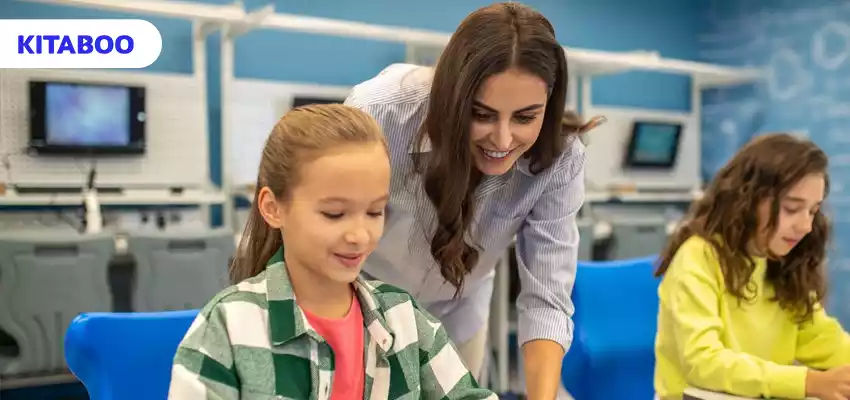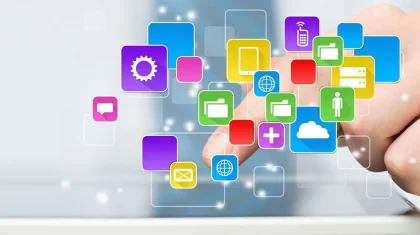
Beyond Textbooks: K-12 Digital Resources Unleashed
Summarize this blog with your favorite AI:
Traditionally, the rigid nature of teaching has confined K–12 education within limits. However, it’s clear that not all students thrive under the same teaching methods. For many, the static forms of information retention found in printed textbooks fall short of providing meaningful engagement.
Fortunately, the evolution of digital content in global K–12 education offers a solution. Educators now have access to diverse tools for imparting knowledge, catering to various learning styles. A 2022–23 survey revealed that students and teachers in the USA utilized online games, research materials, and interactive activities to enhance individual learning experiences.
Keep reading as we take you through K–12 digital resources that have allowed educators and students to move beyond textbooks and create a path toward a more inclusive and accessible form of learning.
Table of Contents
I. Digital Content in Global K12 Education
II. Empowering Educators with Technology
III. The Digital Student Learning Experience
IV. The Future of K-12 Digital Resources
V. Conclusion
Digital Content in Global K-12 Education
In the era before widespread internet access, students relied solely on textbooks and educators for knowledge.
However, not all students thrived in this traditional learning environment. Fortunately, the advent of technology and the accessibility of digital resources worldwide have revolutionized education.
K12 digital resources, including interactive textbooks, multimedia materials, and online courses, aim to captivate students with immersive learning experiences. These resources allow students to absorb information in formats that suit them best. From interactive simulations that breathe life into subjects like science to virtual field trips to historically significant locations, digital content offers unparalleled interactivity and engagement, surpassing the limitations of traditional textbooks.
Empowering Educators with Technology
Students aren’t the only ones who benefit from the popularization of digital technology. With access to K–12 digital resources, educators are empowered to implement diverse forms of learning materials and help their students efficiently and effectively make the most of their education. By incorporating digital content, teachers can more effectively personalize their learning curriculum according to individual student strengths and weaknesses.
Educational technology opens up new channels for teacher cooperation and communication. By enabling the exchange of materials, best practices, and teaching techniques, online platforms and learning management systems promote a collaborative and professional development culture.
Digital textbook platforms such as KITABOO provide educators with an inclusive platform to create, publish, and distribute highly interactive and engaging eBooks. With a range of tools for incorporating intelligent features, educators and educational institutions can truly refine their digital curriculum.
The Digital Student Learning Experience
eLearning for schools provides educators with the tools needed to enhance the student learning experience. A 2021–22 survey published by Statista in 2024 revealed that 44% of K–12 teachers found digital assessment tools effective in achieving their students’ learning goals.
Let’s take a better look at how digital resources help educators achieve this:
1. Engagement and Motivation
Digital content speaks to the language of today’s digitally savvy generation and provides a dynamic and interactive learning experience, unlike static textbooks. When studying seems more like play than work, students are more likely to remain engaged and motivated, whether it be through multimedia presentations, interactive simulations, or gamified quizzes.
Digital tools can accommodate a wide range of learning preferences and styles. Interacting with hands-on simulations, podcasts, and audio recordings, as well as interactive infographics and animations, can all help visual learners.
By allowing for these many modalities, digital content ensures that every student can learn in a way that resonates with them, ultimately improving understanding and retention of the subject.
2. Real-World Relevance of Learning Resources
Digital content, such as movies, simulations, and case studies, helps students connect to the outside world and gives them abstract ideas of life. For instance, a scientific course on photosynthesis might incorporate a virtual lab that enables students to manipulate variables and observe real-time results, offering a practical experience that reinforces theoretical concepts.
Digital tools improve long-term retention by enabling students to perceive the relevance and useful applications of what they are learning. Digital material connects students to the outside world through virtual field trips, interactive simulations, and multimedia presentations, therefore making learning more memorable and meaningful.
3. Diversified Learning Styles
Students with a variety of interests, abilities, and learning styles can be accommodated through digital information-based training.
With the use of digital platforms and learning management systems, educators may swiftly create and assign personalized learning pathways to certain students or student groups. To accommodate pupils with varied ability levels, a teacher could, for instance, provide various assignments of differing degrees of difficulty.
If teachers customize their instruction to each student’s individual needs and skills, every student can get the help they need to succeed. This customized method promotes a sense of belonging and inclusivity in the classroom while also optimizing individual student progress.
The Future of K-12 Digital Resources
Looking ahead, K–12 digital resources have so much potential. And as technology keeps advancing, the digital tools are only going to get better. Take virtual reality (VR) and augmented reality (AR), for instance. They’re already starting to be used in schools, giving students these amazing immersive experiences. Picture stepping right into history or exploring the depths of the ocean—it’s like learning comes to life in a whole new way.
Then there’s artificial intelligence (AI), which is changing the game for personalized learning. AI-powered platforms can figure out what each student is good at and where they need help, in real time. That means they can give students exactly what they need to learn best, whether they’re fast learners or need a bit more time to grasp things. It’s all about making sure every student gets the support they need to succeed.
Conclusion
The inclusion of digital content in K–12 education globally has transformed our approach to teaching and learning. With their ability to raise student achievement and engagement and give teachers state-of-the-art teaching tools, K12 digital resources have enormous promise for the future of education.
Digital curriculum and educational technology allow us to create dynamic, customized learning experiences that prepare students for success in the twenty-first century and beyond.
Digital textbook platforms such as KITABOO offer educators and institutions a platform to create, design, publish, and distribute interactive, adaptable, and engaging learning materials.
Connect with us now to learn more!
Discover how a mobile-first training platform can help your organization.
KITABOO is a cloud-based platform to create, deliver & track mobile-first interactive training content.


![Top 5 Free Publishing Sites for Independent Publishing [2026]](https://kitaboo.com/wp-content/uploads/2025/09/Top-5-Free-Publishing-Sites-for-Independent-Publishing-2026-420x235.webp)
